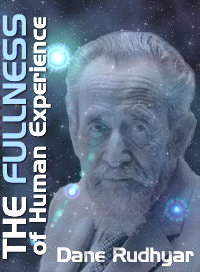 |
| Home | Bio | Art | Music | Literature | Civilization & Culture | Philosophy of Wholeness | Theosophy & Spirituality | Astrology |

CHAPTER SIX
The Formative and Separative Operations of Mind - 1 Mind and form In its most fundamental aspect mind is the relatedness between the principles of Unity and Multiplicity as this relatedness operates throughout the cyclic process of the Movement of Wholeness. The character of the relation. Unity to Multiplicity, unceasingly varies, as one phase of the vast process of being follows another and announces the next. The nature of the activity of mind therefore also changes as the process unfolds and new situations arise. Nevertheless, the function of mind as revealer of the wholeness of any situation — and thus as an aspect of Wholeness — is essentially that of giving a form to the situation. Mind is always and everywhere the formative power of the beingness of any whole. In order to understand mind we have therefore clearly to realize what is implied in the concept of form. As already stated, any whole is finite, since otherwise it should not be considered a whole; it is a system of organization of elements interacting within the boundaries of a "field," at whatever level of being this interaction occurs. Any finite field has boundaries which in some manner separate it from other fields, and these boundaries define its presence in terms of a particular shape and of the ability it may have to relate to and affect other fields. The enduring existence and activity of any whole also implies the internal operation of a principle of organization establishing more or less definite and permanent patterns of functional relationship between the many elements which constitute parts of this whole. These patterns, when understood in their operative totality, constitute the inner form (or structure) of the whole. Unfortunately the words form and shape are often used interchangeably as exact synonyms, and this leads to a basic confusion found even in philosophical books, including books on Hinduism or theosophical doctrines in general.(1) The shape of an object is an external factor which refers mainly to the actual or potential uses for which this object is intended — thus, the shape of a surgical instrument for an eye operation is determined by the structures of both an eye and the surgeon's hand. Generally speaking, the shape of an object is defined by the space and color relationship between an object and whatever surrounds it Shape deals with external relations between a physically organized existential whole and other wholes, or between a well-defined system and the total environment in which it has to maintain its existence as a whole. Form, on the other hand, refers to the specific state of relatedness of many elements contained in a field whose structural energies keep them integrated in terms of their function. The interpretation of the term function differs at every level of activity; for instance, the function of a melodic theme in a symphony differs in character from the function of the liver or adrenal glands in a human body. A discourse has form when the points the speaker makes follow one another in a consistent and ordered sequence revealing the workings of the principle of Unity in his or her mind. A work of art has form when every part of it concurs to convey a personal experience of Wholeness and meaning, or exemplifies a type of ordering and a traditional structure which pioneers in the development of the artist's culture had once envisioned as an archetype of relationship and institutionalized as a collective mode of expression. Two different and indeed opposite types of formative processes have however to be distinguished. In one case, an area of space whose boundaries have been established is divided according to a cosmic or a biological principle of differentiation into regions intended to be the localities for the operation of specific functional activities. We see such a process operating when a fecundated human ovum divides into groups of cells which will become the organs of the fast-growing embryo. In another case, simple elements or wholes operating at a less inclusive level of integration come together, or are more or less forcibly brought together in order to constitute a more inclusive whole by accepting a schedule of organized and functional differentiations. This is the way in which a community of people, a business corporation, or a nation is usually formed. In the first instance, the parceling of an area of space is involved according to geometrical principles studied in occult metaphysics, or according to genetic biological directives whose origin is unknown. In the second case, a building process occurs requiring the gathering of materials or people that may have belonged to some other system of organization, but have left or been wrenched from its field of integration. In both instances the result is a new whole of being which "has form," even if, at the level of an abstract system, one cannot really speak of its "shape." The process of parceling of space refers, as we shall see, to the period during which the divine Mind, operating through celestial Hierarchies, gives form to the archetypes of the future universe envisioned at the symbolic Midnight by the Godhead's Compassion. Mind is then operating in its involutionary aspect. It becomes more specifically an evolutionary factor when, after the Noon (bottom) of the great cycle, its most essential task is the building of sociocultural institutions and religious systems and rites. Mind then increasingly attunes itself to the rising trend toward Unity, while during the earlier half of the cycle (from Midnight to Noon) mental processes were dominated by the principle of Multiplicity and the drive toward differentiation. When they are stabilized, the forms which the involutionary mind evokes out of undifferentiated space, as well as those the evolutionary mind builds by the gathering and integration of scattered elements (physical or intellectual), have a common and essential characteristic: any form implies an inside and an outside. We can look at the distinction between inside and outside in terms of shape (the shape of an object or even of a discourse), or in terms of the internal principle of organization giving to the entity being considered its characteristic generic or individual structure — its form. But wherever mind works as a formative principle, the dualism of inside and outside cannot be totally dismissed as an unreal illusion. Shape, inasmuch as it refers to wholes of being, is the relatedness of inside and outside. However, such a relatedness acquires a different meaning at the Pleroma level, and the concept of shape is hardly valid in a predominantly subjective condition of being. Yet even a subjective state has an internal form; it excludes what the formative principle operating in it considers irrelevant or alien to the specific function of the whole. Thus a relative degree of exclusivity should be expected to exist even at the Pleroma level. The interpenetration of the consciousness of the beings integrated in a particular Pleroma organization does not preclude their common realization that they are components of a particular whole fulfilling a definite function in a still vaster Pleroma. Such a function both includes and excludes other functions. In terms of a consciousness increasingly dominated by an all-encompassing subjective realization of Oneness, it presumably includes all other functions. But in terms of activity and of the power used in such an activity (however subjective and unexperienceable by human beings it may be), a degree of exclusivity has to be assumed. Every mode of power has its own rhythm and vibratory character, even though ideally they all combine into an immense Chord of being. In the Godhead state this Chord is almost one single Tone — but only almost. If there were no discordant vibration in that Chord — no memory of past failures which inevitably arouse Compassion in the Godhead — there could be no new universe, and therefore this present one would not have begun, and the writer of these words could not possibly exist. 1. The Sanskrit term rupa so important in Hindu metapsychology, has usually been translated as "form"; but I believe it refers to the concrete "vehicle" (vahan) necessary for the objective manifestation of a quality of being which can be evoked by sense perceptions and interpreted by the intellectual processes of the rational mind. It is claimed that these qualities can be experienced directly at a higher level as qualities without the need for a frame of reference which a vahan constitutes. Qualities, however, should not be considered formless. They are interrelated within the Godhead's vision of a new universe, as Letters are interrelated within the creative Word (the Greek "Logos"). Return By permission of Leyla Rudhyar Hill Copyright © 1986 by Leyla Rudhyar Hill All Rights Reserved.  Web design and all data, text and graphics appearing on this site are protected by US and International Copyright and are not to be reproduced, distributed, circulated, offered for sale, or given away, in any form, by any means, electronic or conventional. See Notices for full copyright statement and conditions of use. Web design copyright © 2000-2004 by Michael R. Meyer. All Rights Reserved. |
 |
